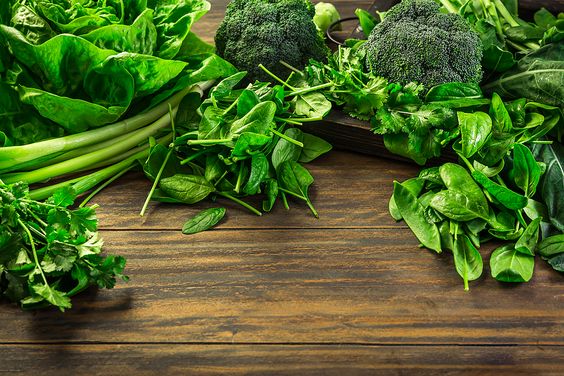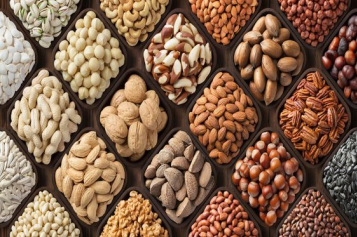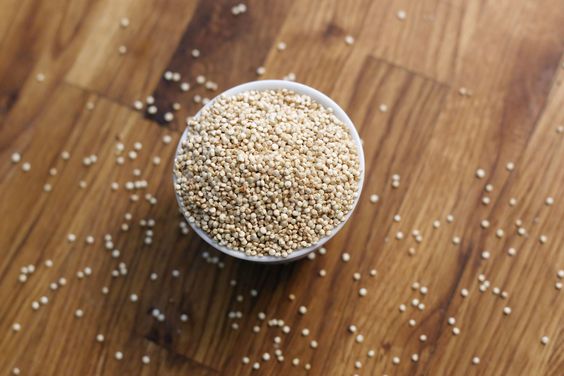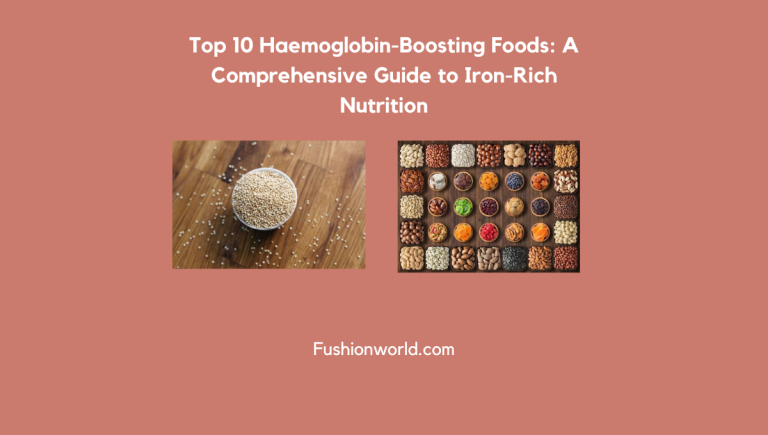Maintaining healthy haemoglobin levels is crucial for overall well-being, and diet plays a vital role in achieving this goal. This comprehensive guide explores the top 10 hemoglobin-boosting foods, including red meat, poultry, seafood, beans, leafy greens, nuts, quinoa, tofu, fortified grains, and dried fruits. Each section highlights their iron content, nutritional benefits, and practical tips for incorporating them into daily meals. By understanding these iron-rich foods and their roles within a balanced diet, individuals can optimise their iron intake and support healthy haemoglobin levels for enhanced vitality and well-being. Consulting healthcare professionals for personalised dietary guidance remains essential for tailored advice.
Table of Contents
Red Meat:
Image: Pinterest
Red meat, including beef, lamb, and pork, stands out as a powerhouse of heme iron, a highly absorbable form of iron crucial for maintaining healthy haemoglobin levels. The iron content in red meat plays a pivotal role in oxygen transportation throughout the body and supports various physiological functions.
Heme Iron Superiority:
– Bioavailability: Red meat’s heme iron is highly absorbable compared to plant-based non-heme iron.
– Efficient Absorption: Enhances iron absorption, crucial for addressing deficiency and boosting haemoglobin.
Varieties and Iron Content:
– Beef: Varies in iron content; organ meats like liver are particularly iron-rich. – Lamb and Pork: Also provide substantial iron, contributing to a diet rich in heme iron sources.
Recommended Consumption:
– Balanced Intake: Moderate portions maintain healthy heme iron levels without excessive saturated fats.
– Cooking Methods: Opt for lean cuts and healthier cooking techniques like grilling or baking.
Considerations:
– Dietary Choices: Red meat is key but combines with diverse iron-rich foods for a holistic approach.
– Individual Needs: Tailor dietary advice based on specific dietary restrictions or health conditions.
Poultry:

Image: Pinterest
Heme Iron Content:
– Heme Iron Source: Chicken and turkey provide heme iron, aiding haemoglobin production.
– Moderate Absorption: While not as high as red meat, poultry’s heme iron is still absorbable. Lean Protein Benefits:
– Nutrient-Dense: Offers lean protein vital for muscle health.
– Lower Saturated Fat: Healthier choice with lower saturated fat compared to red meat.
Recommended Consumption:
– Balanced Portions: Moderation ensures heme iron without excess fat intake.
– Healthy Cooking: Grilling, baking, or poaching retains nutrients and reduces added fats.
Considerations:
– Dietary Variation: Include different cuts for diverse nutrient intake.
– Balanced Diet: Combine poultry with other iron sources for a well-rounded diet.
Poultry, like chicken and turkey, provides heme iron and lean protein, supporting haemoglobin while offering essential nutrients with lower saturated fat content. Incorporate wisely for a balanced nutrient intake.
Seafood:
Image:Pinterest
Heme Iron Content:
– Abundant Source: Shellfish like clams, oysters, mussels, and shrimp offer heme iron for haemoglobin synthesis.
– Good Absorption: Heme iron in seafood enhances iron absorption in the body.
Nutritional Value:
– Omega-3 Fatty Acids: Seafood contains essential omega-3s for heart and brain health. – Vitamins and Minerals: Rich in various vitamins and minerals supporting overall well-being.
Recommended Consumption:
– Diverse Choices: Incorporate a variety of seafood types for a broad nutrient spectrum. -Mindful Preparation: Opt for healthier cooking methods to retain nutrients.
Considerations:
– Allergies and Sensitivities: Be cautious with shellfish allergies when consuming certain types of seafood.
– Sustainability: Choose sustainably sourced seafood for environmental considerations.
Seafood, particularly shellfish, provides heme iron crucial for haemoglobin synthesis and a wealth of essential nutrients. Including diverse seafood options in the diet offers a wide array of vitamins and minerals for overall health and well-being.
Beans and Lentils:
Image:Pinterest
Non-Heme Iron Content:
– Abundant Sources: Kidney beans, chickpeas, lentils, and soybeans are rich in non-heme iron, aiding in haemoglobin production.
– Absorption Enhancement: Pairing with vitamin C-rich foods can boost the absorption of nonheme iron.
Nutritional Value:
– High Protein Content: Beans and lentils offer substantial plant-based protein vital for muscle health.
– Fibre-Rich: Rich in dietary fibre, promoting digestive health and aiding in nutrient absorption.
Recommended Consumption:
– Variety of Legumes: Incorporate diverse beans and lentils for a broader nutrient profile. – Balanced Diet Inclusion: Combine with other iron sources for a comprehensive iron intake.
Considerations:
– Phytates and Antinutrients: Soaking or sprouting legumes can reduce phytates, aiding iron absorption.
– Cooking Methods: Opt for healthier cooking methods to preserve nutrients.
Beans and lentils, packed with non-heme iron and valuable nutrients, serve as exceptional plant-based sources for supporting haemoglobin production. Including a variety of legumes in the diet promotes a rich nutrient intake essential for overall health and well-being.
Dark Leafy Greens:

Image: Pinterest
Non-Heme Iron Content:
– Iron-Rich: Spinach, kale, collard greens, and Swiss chard offer non-heme iron for haemoglobin synthesis.
– Absorption Enhancement: Pairing with vitamin C-rich foods boosts iron absorption.
Nutritional Value:
– Vitamins and Minerals: Rich in vitamins (A, C, K) and minerals (calcium, magnesium) crucial for health.
– Fibre Content: High fibre aids digestion and nutrient absorption.
Recommended Consumption:
– Variety is Key: Include different dark leafy greens for diverse nutrients. -Preserve Nutrients: Opt for cooking methods that retain maximum nutrients.
Considerations:
– Oxalates: Some greens contain oxalates that may hinder mineral absorption. – Combine with Other Iron Sources: Ensure a well-rounded iron intake for better absorption.
Dark leafy greens offer non-heme iron and essential nutrients, vital for haemoglobin and overall health. Including a variety of these greens ensures a diverse nutrient intake and supports overall well-being.
Nuts and Seeds:

Image: Pinterest
Non-Heme Iron Content:
– Iron-Rich: Pumpkin seeds, sesame seeds, cashews, and almonds are abundant in non-heme iron, contributing to haemoglobin synthesis.
– Absorption Support: Their iron absorption improves with vitamin C consumption.
Nutritional Value:
– Healthy Fats: Provide essential fatty acids beneficial for heart and brain health. – Protein and Minerals: Rich in protein, magnesium, and other minerals essential for various bodily functions.
Recommended Consumption:
– Diverse Selection: Include a variety of nuts and seeds for a wide range of nutrients. – Portion Control:Consume in moderation due to their calorie and fat content.
Considerations:
– Phytic Acid: Soaking or roasting nuts and seeds reduces phytic acid, aiding mineral absorption.
– Balanced Diet: Combine with other iron sources for comprehensive iron intake.
Nuts and seeds, packed with non-heme iron and valuable nutrients, offer a plant-based approach to support haemoglobin production and overall health. Including a variety of these in moderation ensures a diverse nutrient intake essential for well-being.
Quinoa:

Image: Pinterest
Iron Content:
– Iron-Rich: Quinoa contains notable amounts of non-heme iron, aiding in hemoglobin synthesis.
– Plant-Based Iron: Ideal for vegetarians and vegans seeking iron sources.
Nutritional Value:
– Complete Protein: Offers all essential amino acids crucial for muscle health and body functions.
– Fiber and Nutrients: High in fibre, magnesium, and other essential minerals promoting overall well-being.
Recommended Consumption:
– Versatile Usage: Use quinoa in salads, as a side dish, or in various recipes for a diverse diet.
– Cooking Techniques: Rinse before cooking and use proper water-to-quinoa ratios to enhance its taste and nutrient availability.
Considerations:
– Saponins: Rinse quinoa thoroughly to remove bitter-tasting saponins before cooking.
– Dietary Variety: Combine quinoa with other iron sources for a well-rounded nutrient intake.
Quinoa, rich in non-heme iron and a complete protein source, serves as an excellent addition to various diets, especially for those seeking plant-based iron options.
Tofu:
Image; Pinterest
Iron Content:
– Moderate Iron Source: Tofu provides a decent amount of non-heme iron, beneficial for haemoglobin production.
– Vegetarian Iron Source: Valuable for individuals following vegetarian or vegan diets.
Nutritional Value:
– Plant-Based Protein: Rich in protein, essential for muscle health and various bodily functions.
– Minerals and Vitamins: Contains calcium, magnesium, and other essential nutrients supporting overall well-being.
Recommended Consumption:
– Diverse Usage: Incorporate tofu into stir-fries, salads, or as a meat substitute for varied meals.
– Preparation Methods: Opt for calcium sulphate coagulated tofu for higher iron content.
Considerations:
– Absorption Enhancers: Pair tofu with vitamin C-rich foods to improve iron absorption. – Balanced Diet: Combine tofu with other iron sources for a comprehensive nutrient intake.
Tofu, offering plant-based iron and valuable nutrients, serves as a versatile addition to diets, particularly for those following vegetarian or vegan lifestyles.
Fortified Cereals and Grains:
Image: Pinterest
Iron Fortification:
– Enriched with Iron: Fortified cereals and grains contain added iron, serving as an accessible source for boosting iron levels.
– Readily Absorbable: The iron in fortified products is designed for better absorption by the body.
Nutritional Value:
– Added Nutrients: Apart from iron, fortified cereals and grains often contain added vitamins and minerals, enhancing their nutritional value.
– Whole Grains: Some fortified options are based on whole grains, offering additional fibre and nutrients.
Recommended Consumption:
– Label Awareness: Choose products with added iron and other essential nutrients for a beneficial impact.
– Incorporation in Diet: Include fortified cereals and grains in breakfast or snacks for a convenient iron boost.
Considerations:
– Sugar and Additives: Check for added sugars or artificial additives in some fortified products.
– Balanced Diet: Use fortified options as part of a diverse diet containing various iron sources.
Fortified cereals and grains, with added iron and nutrients, provide an accessible means to increase iron intake. When chosen wisely and combined with other nutrient-dense foods, they contribute to a balanced diet and support improved iron levels.
Dried Fruits:

Image: Pinterest
Iron Content:
– Iron-Rich: Dried fruits like raisins, apricots, prunes, and figs offer notable amounts of non-heme iron, beneficial for haemoglobin synthesis.
– Portable Iron Source: Convenient for on-the-go snacking to supplement iron intake.
Nutritional Value:
– Natural Sugars: Provide a natural energy boost with their concentrated sweetness. – Fibre and Antioxidants: Rich in fibre and antioxidants promoting digestive health and overall well-being.
Recommended Consumption:
– Moderation is Key: Consume in moderate amounts due to their concentrated sugar content. – Snacking Option: Enjoy dried fruits as a snack or add them to cereals, salads, or trail mixes for variety.
Considerations:
– Serving Size Awareness: Be mindful of portion sizes to avoid excessive sugar intake. – Pairing with Vitamin C: Pair with vitamin C-rich foods to enhance iron absorption.
Dried fruits, rich in non-heme iron and other nutrients, offer a convenient and portable way to supplement iron intake. When consumed in moderation as part of a balanced diet, they contribute to overall health and support haemoglobin synthesis.
Conclusion:
Incorporating a diverse range of iron-rich foods, from red meats to fortified grains, seeds, and leafy greens, creates a holistic approach to supporting healthy haemoglobin levels. Pairing these foods with a balanced diet ensures optimal iron intake, fostering vitality and overall well-being. Consultation with healthcare professionals personalised dietary strategies, enhancing the journey towards robust health.
FAQ About Top 10 Haemoglobin-Boosting Foods:
1. Which food has the highest haemoglobin?
Beetroot.
2. Does tomato increase haemoglobin?
Tomatoes themselves don’t significantly impact haemoglobin levels, but their high vitamin C content can enhance iron absorption from other foods when consumed together, indirectly supporting haemoglobin production.
3. How can I increase blood in my body?
Eat red meat. Red meat, including beef, lamb, and pork, stands out as a powerhouse of heme iron, a highly absorbable form of iron crucial for maintaining healthy haemoglobin levels. The iron content in red meat plays a pivotal role in oxygen transportation throughout the body and supports various physiological functions.
4. Which fruit is best for haemoglobin?
Fruits like pomegranates, apples, and citrus fruits (like oranges) can indirectly support healthy haemoglobin levels due to their vitamin C content, which aids in iron absorption. Additionally, dried fruits such as raisins and apricots are good sources of iron, contributing to haemoglobin production when consumed regularly.

